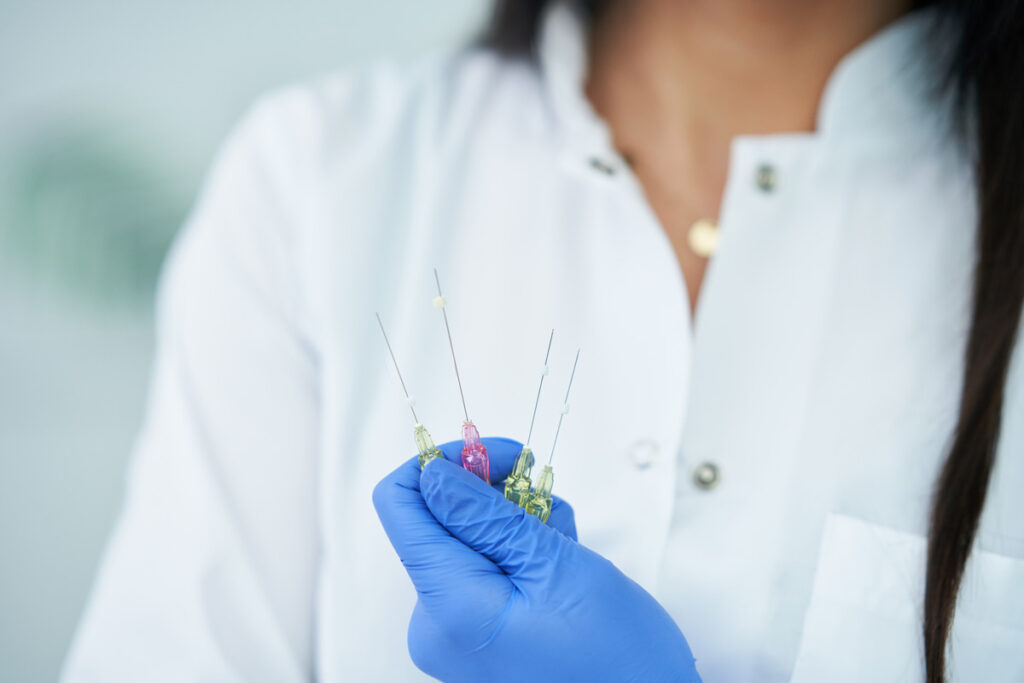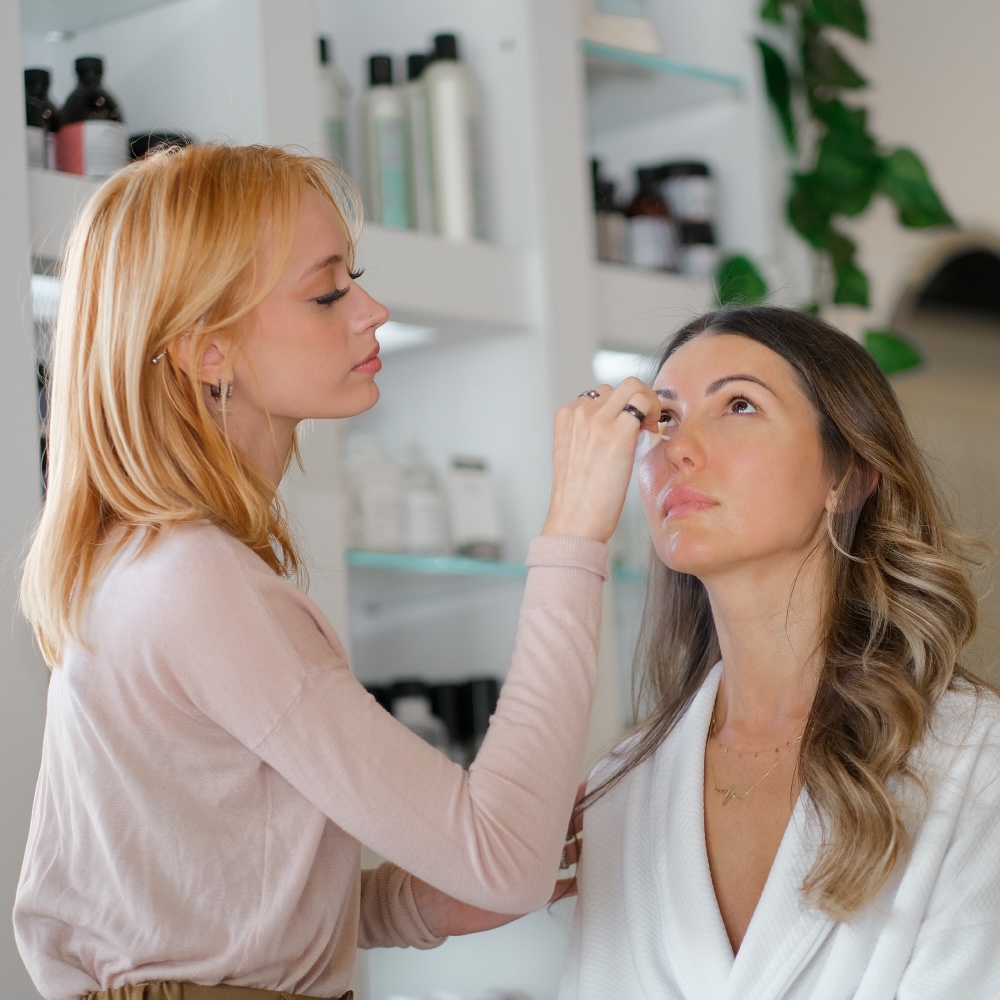
When it comes to tweaking your face to minimize fine lines and other pesky signs of aging, two of the options you might find yourself picking between are PDO threads and traditional facelifts.
Naturally, you’ll want to know as much as you can about either option, and that’s what today’s article is here to do! We will fill you in on the ins and outs of each option, tell you how they work, cost comparisons, efficacy comparisons, and so much more.
So, keep reading if you want to come away from this article feeling empowered with the facts to make an informed decision about your facial rejuvenation procedure.
How PDO Threads and Traditional Facelifts Work?
We will explain with an in-depth explanation of how each of these options works.
How do PDO thread lifts work?
PDO threads work by essentially lifting and suspending sagging skin with the insertion of fine threads underneath the skin’s surface. The PDO thread is a medical-grade absorbable filament inserted using specialized needles just beneath the skin’s surface.
As your body naturally metabolizes the thread, it stimulates collagen production where the practitioner places it, thus creating new tissue to provide a firmer, more toned appearance. This procedure can be done on any part of the face or body. But generally, it works best when treating areas prone to loosening, such as cheeks, jawline, and neck.
Your recovery should be straightforward, with mild bruising for a week or two. Still, most people can return to their normal activities right away.
How do traditional facelifts work?
You likely already know traditional facelifts are a more invasive option when lifting and tightening the skin. During a traditional facelift, an incision is made along the hairline to access the underlying layers of facial tissue so surgeons can manipulate and lift them as necessary.
The surgeon then repositions, tightens, and secures them with small tissues are then repositioned, tightened, and secured with sutures or small screws before being stitched closed. A traditional facelift can dramatically reduce wrinkles, tighten jowls, and smooth out other signs of aging on your face in just one procedure.
The recovery time from a traditional facelift is generally longer than from a PDO thread lift, with swelling and minor bruising lasting anywhere from one to three weeks.
The Effectiveness and Duration of Results

A significant factor in your decision between PDO threads and a traditional facelift will be how effective the results are and how long they last.
How long do PDO thread lift results last?
PDO threads can provide immediate results that will continue improving over time as your body’s collagen builds and smooths out wrinkles. On average, PDO thread lift results last anywhere from 12-18 months before you need a touchup treatment.
How long do traditional facelift results last?
Traditional facelifts offer more dramatic and longer-lasting results than PDO threads when reducing signs of aging on the face. The effects of a traditional facelift can last for up to 10 years. However, individual results vary depending on the person’s skin type and age.
While this can make traditional facelifts seem more appealing, consider other factors before deciding on one option.
Cost Comparison
So, now that you understand the difference between PDO threads and traditional facelifts, it’s time to talk about cost.
How much does a PDO thread lift cost?
Each PDO thread lift treatment runs anywhere between $1500 and $3000.
However, this varies significantly based on the areas you treat, how many threads you use, and much more. As you’ll see in a moment, this makes it a more affordable option than a traditional facelift for those looking for an anti-aging boost without incisions or extended downtime.
How much does a traditional facelift cost?
Understandably, traditional facelifts are generally more expensive as they require specialized training and skill from the surgeon. According to the American Society of Plastic Surgeons, the national average fee for this surgery is around USD 8,005.
Of course, there’s a range of pricing for this option too. Some factors that play a role in the final cost include the complexity of the procedure, where you get it done, surgeon’s fees, and more.
Recovery time
Remembering the recovery times for both of these options is another thing you can’t overlook before making a decision. After all, not everyone can afford to take extensive time off work or wants to deal with pain and discomfort for a long time.
Recovery time for PDO threads
PDO threads are a far less invasive procedure, but they also have a shorter recovery time than traditional facelifts. After a thread lift, most people return to normal daily activities shortly after the procedure. Swelling and mild bruising can last anywhere from one day up to two weeks, but this is generally minor.
As for exactly what you can expect during the recovery process, here’s the good news: you won’t need any stitches or dressings, and there’s minimal risk of infection. And the better news is you’ll have immediate lifting and tightening in the treated areas! From there, results tend to improve over time as more collagen builds.
Along with possible swelling, bruising, and a bit of mild discomfort (though this usually resolves within a few days), you might experience temporary dimpling or puckering of the skin may, but this resolves within a few days or weeks too.
Recovery time for facelifts
On the other hand, it typically takes about two weeks for most individuals to recover from traditional facelift surgery. This involves taking extra steps, such as applying cold compresses and avoiding strenuous activity during that period to ensure proper healing.
Usually, patients must take several weeks off from intense physical exertion and be extra careful when performing certain activities.
You can also expect a level of swelling and bruising for several weeks.
Stitches or surgical drains may be present, and your surgeon will remove them during a follow-up visit. You might experience temporary numbness or changes in skin sensation—these should improve over time. Your plastic surgeon can provide more information on the specifics of your personal recovery timeline.
Factors to Consider when Choosing Between PDO Threads and Traditional Facelifts

You already know much more about PDO threads and traditional facelifts than you did at the start of this article. But we’re not done yet! So now, let’s review some factors to consider when deciding between the two.
PDO threads vs. traditional facelifts
Firstly, age and skin condition come into play. If you’re younger, have good skin elasticity, and don’t have deep wrinkles or sagging tissue, then PDO threads might be a great option since they can provide a practical yet non-invasive lift with minimal downtime and cost.
But let’s say you’re older or, regardless of age, are dealing with many aging signs, such as severe jowls and deep wrinkles. In this case, a traditional facelift might be better suited for your needs.
A variety of personal preferences and circumstances should also be considered, for example, in terms of recovery time and cost. After all, everyone has unique goals and needs when it comes to cosmetic treatments.
Factors to keep in mind
Here’s a list of some specific factors to think about when you’re making this decision:
- The severity of facial sagging and signs of aging: Are you dealing with a lot of loose skin or just minor signs of aging?
- Desired level of invasiveness: Are you prepared to undergo surgery with a longer recovery, or would you try something more non-invasive instead?
- Downtime and recovery period: Are you okay with taking weeks off work, working out, and any other intensive activities, or do you need something with minimal downtime?
- Longevity of results: What’s the timeline for when you want results? And how long do you expect these results to last?
- Personal preferences and comfort with surgical procedures: Are you prepared to undergo surgery with a longer recovery, or would you try something more non-invasive instead?
- Budget and cost considerations: How much are you comfortable spending on the procedure?
- In-patient vs. outpatient: Do you feel more comfortable undergoing an outpatient procedure (like PDO threads), or is general anesthesia preferred for your particular situation?
- Need for additional treatments or combined with other procedures: Are you looking for a stand-alone treatment or something to combine with other treatments to achieve your desired results? (Often, PDO threads are combined with other treatments (like Botox and filler) to create an even better effect.
Who is a Good Candidate for PDO Threads?

If you’re leaning toward PDO threads, one last thing to consider is whether you’re a good candidate for this option in the first place.
Here are some signs you could be the perfect fit:
- Have mild to moderate facial sagging or laxity
Those with minor to moderate facial sagging or laxity best suit PDO threads. However, a traditional facelift may be your better choice if you have more severe signs of aging or sagging.
Don’t miss this post next: GETTING THE MOST OUT OF A PDO THREAD LIFT
- Flexible schedule and low downtime requirements
If you need results quickly and don’t have the time for surgery, then PDO threads are likely the right option, as they require minimal downtime.
- Budget-conscious individuals
PDO threads are a cheaper solution than traditional facelifts (as well as other non-invasive treatments like fillers or Botox). So, if you’re budget conscious and need something that will achieve good results at an affordable cost, this might be the perfect choice.
We also talk about the benefits of non-invasive body sculpting here.
- Those who prefer natural-looking results
If you want subtle, natural-looking results, then PDO threads are a great option since they gently and gradually lift the skin while stimulating collagen production.
- Desire a non-surgical alternative to traditional facelifts
Understandably, not everyone is eager to go under the knife just to get a more lifted, youthful appearance. Luckily, PDO threads mean you don’t need to! So, if this is the route you wish to take, then PDO threads could be for you.
- Are in overall good health
Generally, being in good health is vital regardless of the aesthetic procedure you’re undergoing. This is especially true if you’re considering PDO threads as they are a minimally-invasive procedure, and having a healthy body will help ensure an optimal outcome.
- Have realistic expectations about the outcomes
It’s always important to go into any cosmetic procedure with realistic expectations. PDO threads can give you a more toned and lifted appearance. Still, they won’t completely transform your look in one sitting. It’s best to consider this treatment a gradual process that continues to improve over time.
Read this article next to take the “scary” out of PDO thread lifts.
- Are willing to follow post-treatment care instructions
Your provider carefully details how to look after your skin while you heal. Follow this advice closely to achieve the best results and minimize risks.
- Have sufficient skin thickness and quality for the procedure
This is another crucial factor to consider. After all, PDO threads won’t be able to lift the skin if it’s too thin or has already lost its natural elasticity. But, again, your provider can help you determine whether or not your particular skin is suitable before the procedure.
- Understand the temporary nature of the results and are open to maintenance treatments as needed
Finally, it’s essential to understand the results of PDO threads aren’t permanent. They can last anywhere from 12-18 months—depending on factors such as age, lifestyle, and skincare routine.
After this time, you may require additional treatments to maintain your desired outcome. However, even before that time comes, you may complement your PDO thread lift with other treatments like Botox and filler, as we mentioned.
Along with those treatments, here are some other things that can complement your look:
- Medical-grade skincare
- Facials
- Lasers
- Lifestyle changes including sun safety
Next Step: Contact Anushka Med Spa
As promised, we’ve explored the ins and outs of both PDO threads and traditional facelifts to help you decide which lifting procedure is right for you.
Ultimately, only a qualified medical professional or medical aesthetician can give you the advice that will truly fit your needs—but hopefully, we’ve provided you with a better understanding of what each option entails so you can have an informed discussion with your provider.
So now it’s time to take all the information we’ve looked at today and decide: are PDO threads or a traditional facelift best suited for my needs? And remember, the team of professionals at Anushka is happy to discuss your lift options with you, including determining whether you’re a good candidate for a PDO thread lift.
